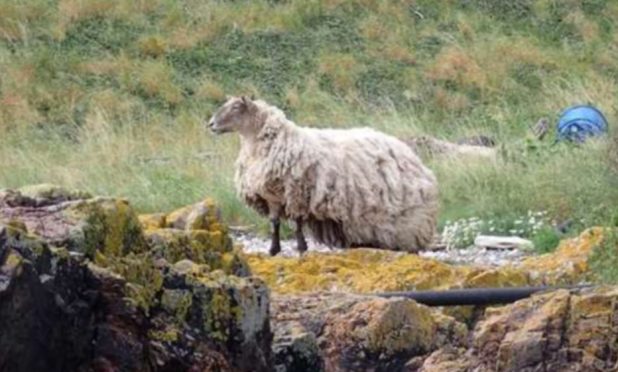The SSPCA has called off a rescue operation to retrieve a lonely sheep which has been stuck at the bottom of a cliff near Brora for two years.
The sheep, dubbed Britain’s loneliest sheep, has been cut off for years but was recently discovered by kayaker Jill Turner.
After a year had passed, Ms Turner again spotted the sheep with its overgrown coat and decided to alert the animal welfare charity, the SSPCA.
The charity said they were aware of the situation but initially decided against a rescue mission as the animal had plenty of food and water.
However, a petition was launched to catch the attention of animal charities for them to do more.
The petition described sheep as “very sociable and intelligent creatures” and being isolated would negatively impact their health.
Rescuers face several challenges including the remote location
Many people empathised with the sheep’s situation and the petition has gathered more than 46,000 signatures in under four days.
It is unknown who owns, the sheep, or where it came from, but it is understood a farmer has explored how it could be retrieved from the seashore.
Following mounting pressure, the SSPCA announced earlier this week that they would try to stage a rescue which they deemed “complex” due to the remote location.
As the sheep is not a domestic animal, Coastguard or Mountain Rescue teams cannot help, according to the SSPCA.
SSPCA chief superintendent Mike Flynn said: “We appreciate that there is growing concern for the sheep and we want to reassure the public that we are doing everything we can.
“The area where the sheep is stranded is very inaccessible by both land and sea, making this rescue incredibly complex, especially due to the logistics of rescuing a large animal.
“We have been liaising with other agencies as to the best way to access the area but so far we have not found a suitable solution that doesn’t compromise the safety of the rescue teams and the welfare of the sheep.”
Sheep ‘extremely stressed’ by human contact
A local skipper also advised that landing a boat in the area where the sheep is located would be very difficult.
The story has gained so much interest that a hovercraft company says it maybe able to help reach the sheep.
However, Mr Flynn says there are other challenges, including sedating the animal for transport.
He added: “The sheep will be very difficult to catch without gates and hurdles and is likely to be fearful and run away.
“As the animal’s fleece is overgrown, it will also prove difficult to temporarily sedate the animal, which would have assisted with the rescue.
“The sheep has been living as a feral animal and will be extremely stressed by human contact.
“However, should the situation be assessed as too unsafe for either the rescue team or the sheep, the rescue will not go ahead until safe to do so.”



Conversation